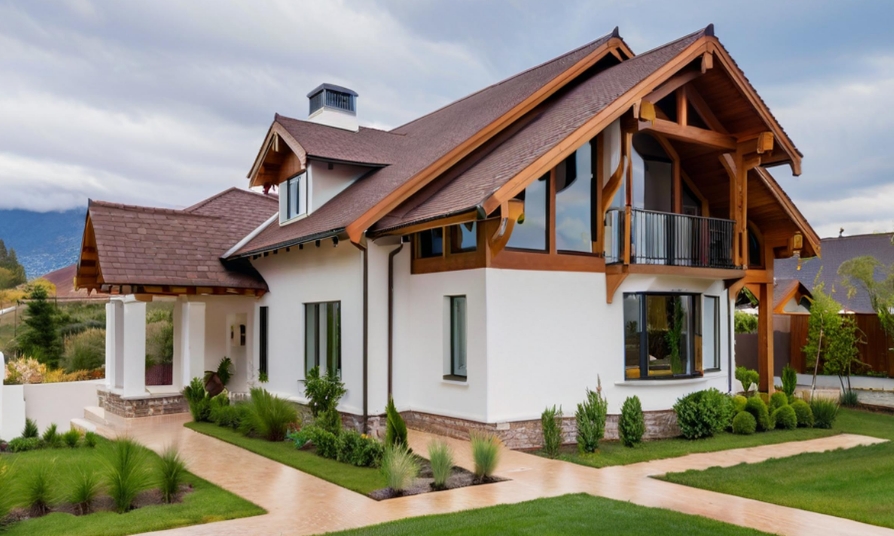Light Steel vs Traditional Brick: Which Villa Offers Better Long-Term Value?
Comparison of long-term value between light steel villa and traditional brick villa
Light steel villas have long-term value advantages in terms of environmental protection, seismic resistance, and transformation flexibility, and are suitable for users who pursue modern lifestyles and value sustainability; traditional brick villas are more suitable for dry climates, geologically stable, and prefer traditional architectural aesthetics. Traditional brick villas are more suitable for areas with dry climate, stable geology and preference for traditional building aesthetics.
I. Life cycle cost analysis
Initial construction cost: light steel villa 15,000-25,000 yuan/100 square meters (including foundation) Traditional brick villa 18,000-30,000 yuan/100 square meters (including complex foundation treatment)
Maintenance cycle: light steel villa every 2-3 years need anticorrosion treatment (coastal areas shortened to 1-2 years) traditional masonry villa 5-10 years overhaul (mainly to repair water seepage, wall cracks)
Average annual maintenance cost: light steel villa 500-1000 yuan / year (anticorrosion + equipment overhaul) traditional brick villa 300-800 yuan / year (waterproofing + structural reinforcement)
Service life: light steel villa 30-50 years (galvanized steel + regular maintenance) traditional masonry villa more than 50 years (brick structure is more stable)
Key conclusion: light steel villa initial cost is 10%-20% lower, but long-term maintenance investment is required; brick villa has high initial cost, but less maintenance pressure.
II. Comparison of Core Value Dimensions
Environmental friendliness and sustainability
Light steel: 90% of the materials can be recycled, reducing construction waste by more than 70%, in line with carbon neutral policy guidance.
Brick and tile: clay brick production destroys arable land, and carbon emissions are 2.3 times higher than those of light steel.
Space utilization
Lightweight steel: walls are only 12cm thick, using 8%-15% more space than masonry for the same floor area.
Masonry: traditional walls are 24cm thick, reducing space utilization by about 10%.
Seismic resistance and safety
Lightweight steel: ductility up to 3 times that of traditional structures, can withstand a magnitude 9 earthquake.
Masonry: weak seismic capacity, 4.6 times higher risk of collapse in an earthquake than lightweight steel.
Retrofitting Flexibility
Lightweight steel: modular design supports rapid space increase/decrease (70% shorter remodeling cycle than masonry).
Masonry: many restrictions on load-bearing walls, remodeling costs up to 2-3 times higher than light steel.

III. Comparison of aesthetics between Light steel frame villa and traditional masonry villa
Adopting modularized structure, it can realize the heterogeneous design such as hyperbolic roof and wavy façade, which breaks through the geometric limitation of traditional building.
High flexibility in modeling, support suspended balconies, rotating stairs, panoramic windows and other modern elements, suitable for minimalist, industrial and other diversified styles.
The façade can be made of carved metal panels, imitation stone panels, wood-grained composite panels, and antique carvings or modern geometric textures can be realized through CNC carving.
Integration Glass curtain wall + translucent roof, utilizing natural light to create dynamic light and shadow effects and enhance the sense of spatial art.
Fluorocarbon paint, ceramic coating and other technology, support high saturation color matching such as Morandi color and candy color.
The surface is not easy to accumulate dust, and can be kept clean by rainwater.
Traditional brick villa:
Restricted by the load-bearing wall structure, the appearance is mostly square and symmetrical modeling, and the complex curve design requires additional reinforcement and high cost.
Traditional sloped roofs are the mainstay, with limited choices of exterior doors and windows, making it difficult to realize large-span glass curtain walls.
The exterior decoration is mainly cement plaster and tile veneer, which is prone to problems such as tile peeling and cement cracking.
The traditional brick wall has a heavy texture, but has a single color (mainly gray and red), and needs to rely on later paint renovation to maintain the visual effect.
Relying on manual painting or tiling, the color is susceptible to fading by ultraviolet rays and rainwater erosion, and needs to be renovated every 5-8 years.
Brick joints are prone to moss or stains, affecting the overall aesthetics.
IV. Suggestions for regional adaptability
Earthquake-prone areas Light steel villas have significant seismic performance advantages, increasing safety by more than 80%.
Coastal/high humidity areas Brick villa (need to strengthen waterproofing) Lightweight steel anticorrosion cost increased by 50%, brick natural moisture better
Oriented cities Lightweight steel villa can be subsidized by green building.
V. Long-term investment return calculation
Light steel villa: 30 years total cost of about 450,000 yuan (including maintenance), residual value of 60% (material recovery income).
Masonry villa: 30 years total cost of about 550,000 yuan (including maintenance), residual value of 40% (high demolition costs).
Difference: light steel villa full cycle net income is 15%-20% higher than brick and tile, especially in the tightening of environmental policies in the region more significant advantages.


